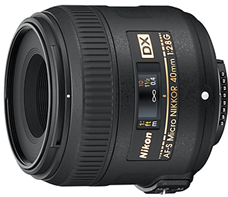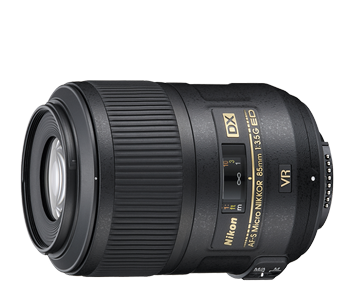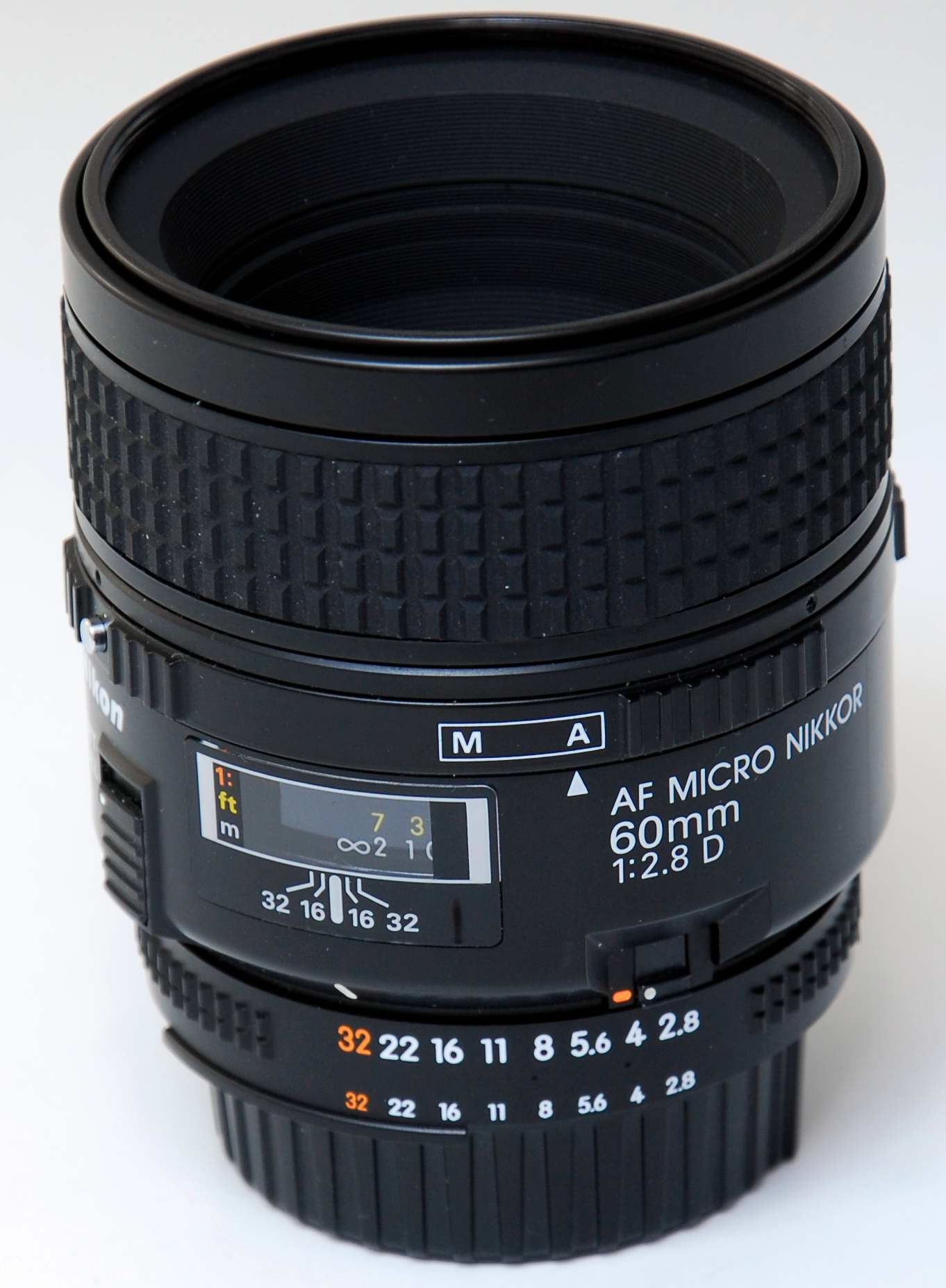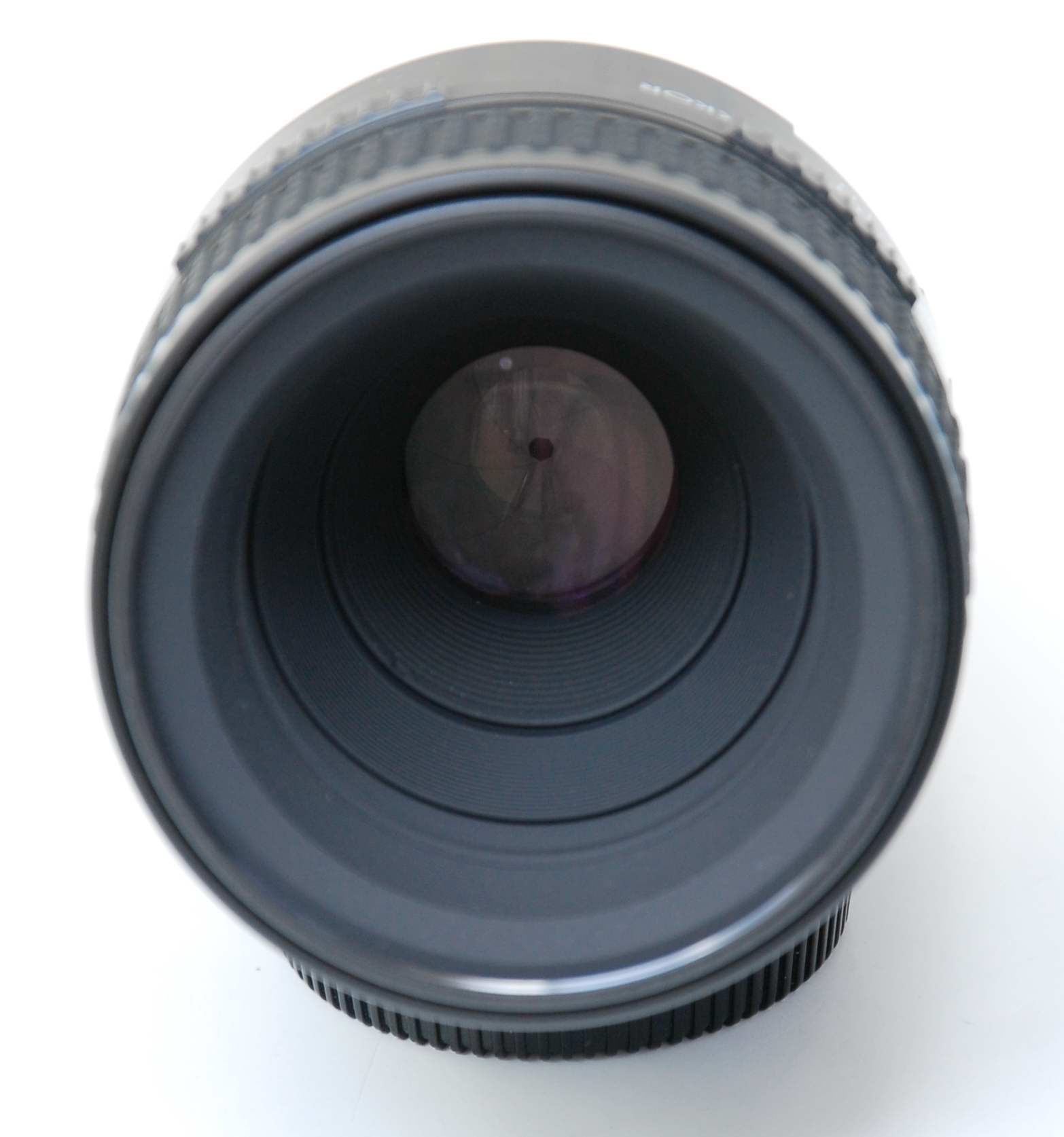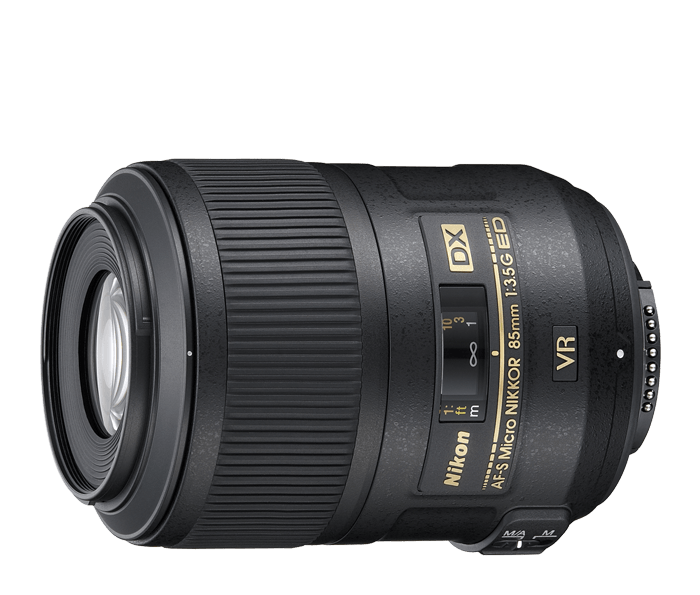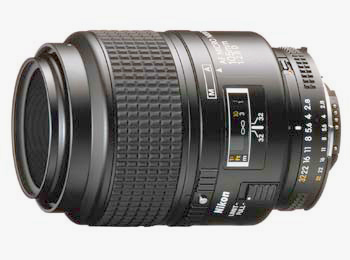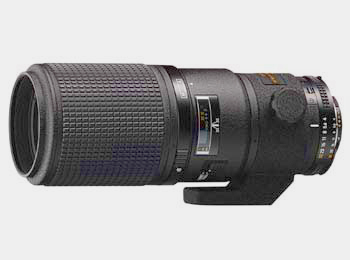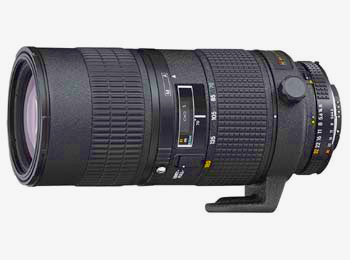Nikkor autofocus macro-lenses
AF-S DX Micro-Nikkor 2.8/40 mm. G
Mid July 2011 Nikon introduced this very affordable macro lens, to be used on (digital) SLR cameras with a DX-sensor only. It is possible to shoot pictures at an 1:1 ratio without additional accessories; minimum distance 16 cm. The optical formula consists of 9 elements in 7 groups with a 7 blade diaphragm. The lens is an auto focus lens - with built-in Silent Wave Motor - but can be used manually as well (M/A & M). It uses the common 52 mm. filter thread, the HB-61 bayonet hood and is weighing in at 235 gram. Due to the G-mount this lens will not fit older SLR cameras.
AF-Micro-Nikkor 2.8/55 mm.
This lens was born as a manual Micro-Nikkor back in 1979. The auto focus version was introduced in October 1986. Its optical construction of 6 elements in 5 groups wasn´t altered. It focuses down to 30 cm. at a reproduction ratio of 1:1 = life size! Without any additional ring or lens. Filter size is 62 mm., hood HN-22 and its weight is 420 gram.
AF-Micro-Nikkor 2.8/60 mm.
This successor of the lens mentioned before was introduced in October 1989. The optical design consists of 8 elements in 7 groups. It has a working distance of 90 mm., focuses down to 22 cm. (repro-ratio 1:1) and has the well-known close-range correction (CRC), takes 62 mm. filters, hood HN-22 and weighs in at 455 gram. A slightly modified version (see above) was presented in December 1993 featuring the distance (D) data transfer. This lens has an unchanged optical construction but lost 15 gram of weight. The front element of the lens is hidden at 5 cm. behind the filter ring, making a hood almost redundant.
AF-S DX Micro-Nikkor 3.5/85 mm. G ED-VR
In October 2009 Nikon presented this Micro-Nikkor for the DX format cameras (in G-mount!) featuring the vibration reduction system. The lens has 14 elements (of which one is made of ED-glass) in 10 groups and focuses down to 28 cm., which is life size (1:1). Filter size is the well-known 52 mm. The lens weights in at 355 gram and may use hood HB-37.
AF-Micro-Nikkor 2.8/105 mm.
This Micro-Nikkor also has a manual ´ancestor´, which was introduced in 1984. The first auto focus version was presented in July 1990, having an optical construction of 9 elements in 8 groups, featuring the CRC-system and taking 52 mm. filters. It can be focused down to 31 cm. (repro-ratio 1:1) and weighs in at 555 gram. In December 1993 the D-version (nothing else was changed) was introduced. The best hood is HS-7.
AF-Micro-Nikkor 4/200 mm.
The manual ancestor of this long micro-lens was born in 1978. In December 1993 the auto focus version was introduced. This sophisticated lens has an optical construction of 13 elements (of which two of ED glass) in 8 groups. The beauty can be focused down to 50 cm. (repro-ratio 1:1) and has a minimum working distance of 26 cm. Extra features are internal focusing, close range correction, distance data transfer, 9 aperture blades for a very nice bokeh (!), super integrated coating and a 360° rotating tripod collar. Filter size is 62 mm., weight is 1190 gram. The best hood is HN-30. Probably the best micro-lens ever build.
AF-Zoom-Micro-Nikkor 4.5-5.6/70-180 mm. ED
This lens was introduced in September 1997 as the world´s first micro auto focus zoom lens! It enables macro shooting throughout the zoom range giving a reproduction ratio of up to 0.75 X. Without moving the camera the ratio can be adjusted by zooming. It can be focused down to 37 cm. at all zoom settings. At 180 mm. life-size (1:1) magnification is possible by attaching close-up attachment lens No. 6T. This beautiful lens has an optical construction of 18 elements (of which one is an ED glass element) in 14 groups. Filter size is 62 mm., weight is 990 gram and the best hood is HB-14. The lens has a built-in tripod mounting collar rotating 300°. Finally: this lens has a built-in CPU, like all D-lenses, which makes it possible to make use of all sophisticated Nikon flash programs. Of course this lens can be used for regular telephotography as well.
|
